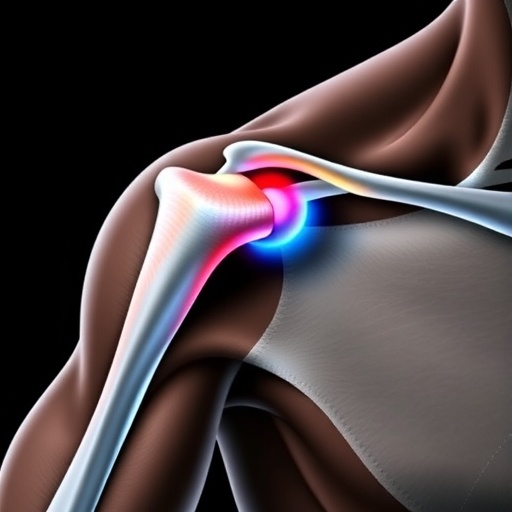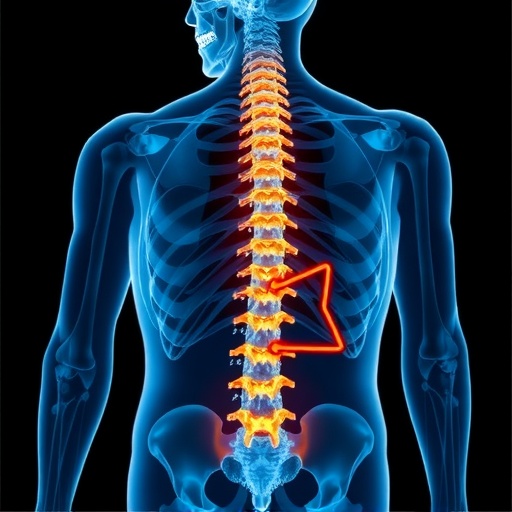PROTECT YOUR DNA WITH QUANTUM TECHNOLOGY
Orgo-Life the new way to the future Advertising by AdpathwayIn a significant advancement for pediatric healthcare, a recent study has explored the potential long-term consequences of abdominal and pelvic computed tomography (CT) scans in children. The research, which appears in the Journal of Medical Biology Engineering, presents alarming findings regarding the risk of malignancies and benign genital tumors following these imaging procedures. This retrospective cohort study, conducted by a team of experienced medical researchers, has generated considerable discussion in the medical community, questioning the existing protocols and guidelines surrounding pediatric imaging.
The impetus for this groundbreaking study arises from a growing concern about the cumulative effects of radiation exposure from diagnostic imaging technologies. Pediatric patients, due to their developing bodies and longer life expectancy, represent a unique demographic at a potentially higher risk for developing radiation-induced malignancies as they age. The authors meticulously examined a substantial cohort of children who had undergone CT scans, comparing their health outcomes over time with those of a control group who did not receive such imaging.
The study’s methodology is pivotal in providing reliable and comprehensive results. Researchers employed a rigorous approach, gathering data from multiple healthcare institutions, thus enhancing the diversity and number of subjects involved. This not only strengthens the validity of the findings but also underscores the need for a more profound understanding of how diagnostic procedures impact pediatric populations. The meticulously collected data spanned several years, allowing the team to analyze long-term health repercussions with much-needed precision.
One of the most striking revelations of this research is the increased incidence of malignancies among children who underwent CT scans compared to their peers who did not. The authors present compelling evidence linking radiation exposure to an uptick in certain types of cancers, raising critical questions about the safety of such diagnostic tools. The types of malignancies observed include several that are notoriously aggressive, underscoring the need for alternative imaging options where feasible.
In addition to malignancies, the study also highlights the emergence of benign tumors in the genital region of affected children. This finding is particularly concerning as it adds another layer to the potential risks associated with CT scans. Benign tumors, while generally less dangerous than their malignant counterparts, can still lead to significant health complications and require careful monitoring and sometimes invasive management. The implications of these results are profound, suggesting that more stringent guidelines are necessary to balance the benefits of CT imaging against its risks.
As medicine evolves, the importance of weighing the risks versus benefits of diagnostic procedures becomes crucial. The findings from this study call for a reassessment of currently existing practices in pediatric care. With the increasing availability of alternative imaging technologies such as MRI and ultrasound, which use little to no ionizing radiation, health practitioners are urged to consider these options first when addressing diagnostic needs in children.
Moreover, informed consent practices may need an overhaul to enhance parental awareness about the potential risks connected to CT scans. Parents often assume that the benefits of immediate diagnosis outweigh the long-term risks, yet this study sheds new light on the gravity of those risks. Transparent conversations between healthcare providers and families regarding the safety profile of diagnostic imaging are necessary to empower parents to make informed choices about their children’s healthcare.
In addition to examining individual health outcomes, this study also prompts broader considerations about public health implications. As pediatric care increasingly embraces advanced imaging technology, understanding the latent health risks of these diagnostic tools becomes essential. The study calls on public health officials to create educational campaigns aimed at parents and healthcare professionals to raise awareness about the potential risks associated with CT scans.
In light of these findings, researchers intend to delve deeper into the mechanisms by which radiation exposure from CT scans contributes to tumorigenesis. Scientific inquiry into radiation biology may pave the way for new protective strategies that mitigate risks while preserving the diagnostic benefits that CT imaging offers in medical practice. Future studies will be vital in understanding exactly how and why certain children seem more susceptible to radiation-induced malignancies.
While this study indeed raises alarm bells, it also serves as a pivotal opportunity for reform in pediatric radiology. The findings should prompt healthcare facilities to implement protective measures, such as refining scanning protocols to minimize exposure and maximizing the use of non-radiative imaging methods whenever possible. Additionally, radiologists must stay informed about emerging research to provide care that prioritizes patient safety while maintaining diagnostic efficacy.
Engaging the medical community in discussions about these findings will be critical. Stakeholders, from policymakers to practicing clinicians, must be part of the conversation about how to integrate this new data into existing medical guidelines. The study may act as a catalyst for future guidelines that emphasize best practices in pediatric imaging and enhance shared decision-making with families regarding diagnostic pathways.
In summary, the recent findings published in the Journal of Medical Biology Engineering mark a pivotal moment in pediatric health care, prompting essential discussions about the safety of CT imaging in children. As the medical community digests these findings, a collective effort will be necessary to balance the urgent need for accuracy in diagnostics with the equally significant responsibility of protecting the long-term health of pediatric patients. The potential links between radiation from CT scans and subsequent malignancies and benign tumors represent an area ripe for further exploration and a critical focus of future research agendas.
This essential study raises fundamental questions about how we approach pediatric imaging and challenges us to consider the moral ramifications of exposing vulnerable populations to the risks associated with ionizing radiation. As we forge ahead, the commitment to patient safety must remain paramount, ensuring that the advancement of medical technology is always accompanied by a commitment to understanding its long-term impacts.
Subject of Research: Pediatric abdominal and pelvic CT scans and their long-term risks of malignancy and benign tumors.
Article Title: Pediatric Abdominal and Pelvic CT Scans and the Subsequent Risk of Malignancy and Benign Genital Tumors: A Retrospective Cohort Study.
Article References:
Su, FY., Chen, CF., Huang, K.CY. et al. Pediatric Abdominal and Pelvic CT Scans and the Subsequent Risk of Malignancy and Benign Genital Tumors: A Retrospective Cohort Study.
J. Med. Biol. Eng. (2025). https://doi.org/10.1007/s40846-025-00978-9
Image Credits: AI Generated
DOI:
Keywords: Pediatric imaging, computed tomography, radiation exposure, malignancies, benign tumors, health outcomes, diagnostic imaging, public health.
Tags: benign genital tumors in childrencancer risk from imagingCT scans in childrencumulative radiation effectshealthcare research methodologylong-term effects of CT scansmalignancies from diagnostic imagingmedical community discussions on imaging riskspediatric healthcare advancementspediatric imaging protocolsradiation exposure in pediatricsretrospective cohort study in medicine


 1 hour ago
7
1 hour ago
7





















 English (US) ·
English (US) ·  French (CA) ·
French (CA) ·